Types of saltwater aquarium algae and effective ways to control
Saltwater algae control is probably the biggest problem faced by fish keepers. Having been a fish keeper for quite a few years myself, I have this question asked to me very frequently which surprises me a lot.
Although it might sound like a tedious and impossible task to keep the algae out of your aquariums, it’s much easier than you think! Don’t get bogged down by the algae forming in your aquarium. They might not be the most terrifying things around, but their presence can be quite a hassle to your fish and can destroy their living environment if not taken care of properly.
Lucky for you, I’m going to share all the years of experience I’ve had in removing those nasty algae. With the right knowledge and implementation, it should be a breeze for you. Without wasting too much time talking, let’s get cracking.
- The Basics: Science Behind Algae Growth
- Why Algae Can Be Such A Nuisance
- Importance Of Algae In An Aquarium
- Types Of Saltwater Algae
- Algae Prevention And Control
- Maintaining Clean Water
- Regular Tank Maintenance
- Proper Lighting Period (Photoperiod)
- Use The Right Sea Salt Mix
- Refugiums
- Protein Skimmers
- Keeping Live Rock In The Aquarium
- Having The Right Substrate
- Phosphate Removal Compounds
- Algae Eating Creatures
- Routine Checks
- Good Quality Equipment
- Carbon Dosing
- Introduce Macroalgae
- Control Food Addition
- Conclusion
The Basics: Science Behind Algae Growth
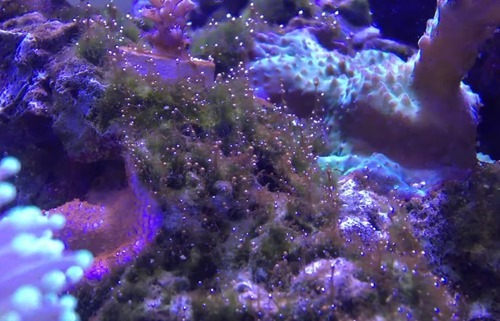
Algae are plants that are pretty amazing to study and learn from, probably not the most amazing things to have in your aquarium though. They grow, survive in extreme conditions and spread rapidly, all without a fuss.
Due to this highly adaptable nature of theirs, it’s pretty hard to keep algae growth under check. You see a little bit of algae growing in your tank one day and before you know it your whole tank is filled with it and you have no idea of how to get rid of it!
Algae primarily grow due to a high amount of nutrition and the availability of light in the water of your aquarium. Just like any other plant, algae needs light to survive. Photosynthesis plays a key role in the growth and survival of algae.
People often ask me, “I put clean, purified water and clean it ever so often, but how does the algae still get into my tank?”
Well, the answer to your question is really simple. Spores that come from the air and also the bacteria that’s present in the aquarium already, which your fish need to survive, causes bacteria to grow. Just like we require good bacteria in our bodies in order to carry out various functions, the fish in your tank also require good bacteria as a part of their ecosystem.
Certain fish, especially the goldfish, are very dirty and tend to leave a lot of bacteria behind. This along with the fish food that isn’t being consumed, uneaten fish food, causes bacteria to spread. When these bacteria are exposed to light it causes the growth of unwanted algae.
Once this algae grows, it’s very easy for the algae to spread without any warning. The presence of nutrients can accelerate the growth of algae in the aquarium. Primarily, phosphorus along with some amounts of nitrogen are the prime drivers for the growth of algae.
Phosphorus comes from many sources, one of them being the water-filled in the aquarium. Another source of phosphorus is the food fed to the fish and sea salt mixes among other sources. If you’re cleaning your tank on a regular basis and filtering out the water then there could be another reason that’s causing the algae to grow in your aquarium.
If you aren’t keeping track of the pH balance in the water, it could be another reason you’re seeing the algae in your tank spreading quickly. High pH could be another cause of the growth of algae. Test the saltwater with a pH testing kit or take a sample of your water to the nearest pet shop for a free test to determine the pH level. The ideal pH level for saltwater aquariums is between 7.6 and 8.4.
pH levels can change depending on the amount of carbon dioxide in the water as well. The amount of carbon dioxide is inversely proportional to the pH level in the water. The higher the carbon dioxide is, the lower the pH level is and vice-versa.
Why Algae Can Be Such A Nuisance
Although not all algae are bad, the ones that are can be quite problematic if not controlled properly. Algae can be the cause of a lot of toxic byproducts that can harm not only the fish in your aquarium but also the corals.
Besides not topping the list of the prettiest things to look at, algae can cause a major imbalance in the ecosystem that can lead to the ecosystem’s destruction.
Not keeping them under check can also lead to a lot of time being spent in the maintenance and care of the aquarium which can easily be avoided with a proper system in place to avoid the growth of such bacteria. Some of these algae can be toxic in nature causing various harmful diseases to your fish or even death to your beloved little fishy.
Importance Of Algae In An Aquarium
As I stated previously, not all algae are bad algae. Macroalgae (good algae) requires the same nutrients that micro algae (bad algae) require. Therefore, having macro algae keeps the micro algae at bay since they fight for the same nutrients.
Besides keeping the micro algae at minimal levels, macroalgae have some benefits as well. Macroalgae absorbs the excess nutrients present in the tank which prevents it from being used up by the microalgae in the aquarium. Using these excess nutrients, it produces microbes that are useful for the aquarium’s ecosystem.
These algae also produce oxygen, limit carbon dioxide, and maintain pH levels which are beneficial for the maintenance of the overall health of the aquarium. It’s hard to keep the right balance between limiting the growth of microalgae and at the same time spurring the growth of macroalgae. This is very important and will be covered later in this article.
Types Of Saltwater Algae
There are various types of saltwater algae that grow in your little aquarium. An interesting point to note is that many so-called “algae” are actually not even algae, they’re bacteria. They look a lot like algae, hair-like structure, but aren’t really algae.
Algae can be single-celled organisms or can take up multi-cellular forms such as seaweed. They aren’t like your conventional plant, they don’t have roots, stem, leaves, or any other vital organs that plants have but they’re still able to photosynthesize.
Let’s take a look at some of the most common forms of algae that you can find in your very own saltwater aquarium.
Red Algae (Phylum Rhodophyta)
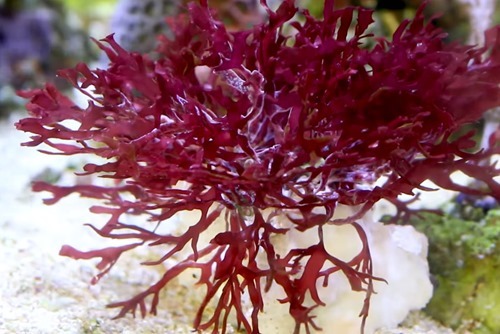
Red algae are the good algae we previously discussed. They grow in sheets and are generally soft and flexible in nature. Red algae tends to grow on live rock, other forms of algae, or even plants.
Unlike brown algae, you’ll never see red algae floating in the water, it always attaches itself to something. Two of the most common forms of red algae are kelp and coralline.
Dinoflagellates

Dinoflagellates
These are unicellular algae that come in various colors right from light green, dark brown to colorless! This makes them very hard to identify and makes it even harder to remove.
Dinoflagellates are toxic in nature and are harmful to the aquarium’s environment. Due to the toxic nature of this algae, it is important to constantly check on the health of the water in your tank and perform regular manual cleaning, frequently change the water, and check on carbon levels to keep the algae in check.
Diatoms (Bacillariophyta/Brown Algae)
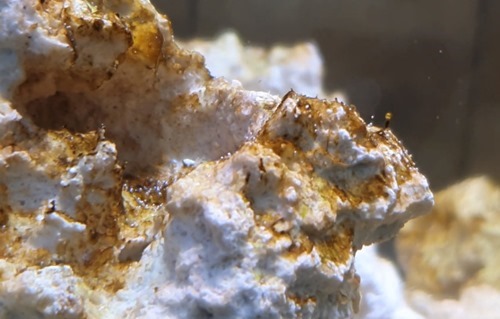
Diatoms
Diatoms or brown algae have crusty, hard skeletons and are one of the few algae that are good for your aquarium. They produce oxygen, limit carbon dioxide, and also produce food that can be consumed by your fish.
Diatoms have one form that can disturb the water’s environment though, it’s golden-brown in color and can easily be controlled by limiting the nutrients in the aquarium.
Cyanobacteria (red slime algae)
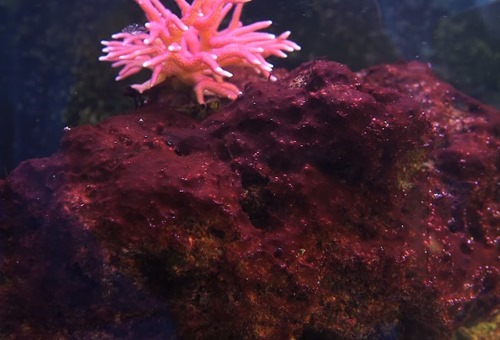
Cyanobacteria
Cyanobacteria is slimy in nature and if not controlled can be a big nuisance in your aquarium. They help with the fixing of nitrogen which boosts the growth of many other unwanted algae. This is actually a form of bacteria and isn’t really an alga.
Green Algae (Hair Algae)
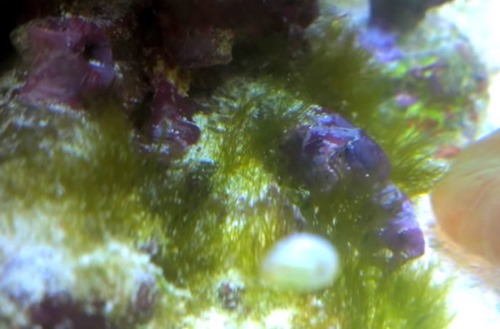
Green Hair Algae
Green algae or hair algae, as their name suggests, are algae that look very similar to small hair. They are generally green in color but vary in shades from light to dark green.
Being green in color and similar to hair, they tend to look like a carpet of grass as they begin to grow and spread. They are likely to grow on rocks in your aquarium.
Valonia (Bubble Algae)
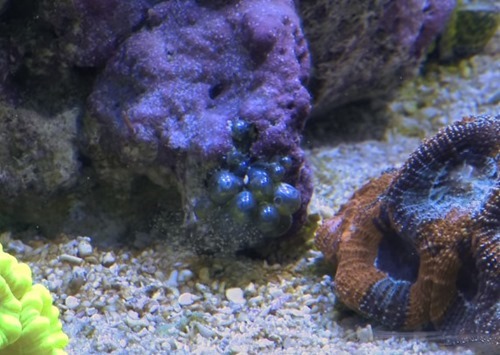
These green in color algae are quite distinct from other forms of algae because of the bubble shape it takes. They only have the bubble-like shape to it and there’s nothing else besides that to the bubble algae in terms of what it’s made up of.
Inside the bubble though, you’ll find thousands of spores, so if you ever make the mistake of popping one of the bubbles you’ll find yourself with a big task on your hands. The bubble algae will spread very quickly and will be hard to contain.
If you carefully remove the bubble algae on a regular basis, it won’t cause too much harm to the aquarium’s environment.
Bryopsis Algae
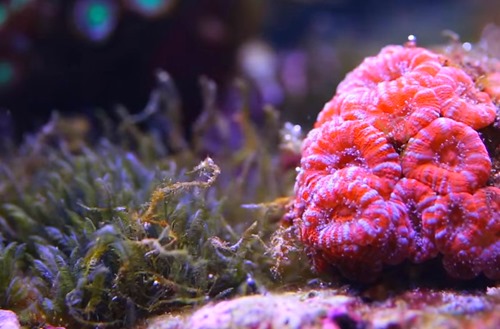
You might mistake these green-colored algae for hair algae during their initial growth stages, but after they begin to grow you’ll see that they look more like ferns. They tend to grow on rocks like the red algae.
Caulerpa Algae
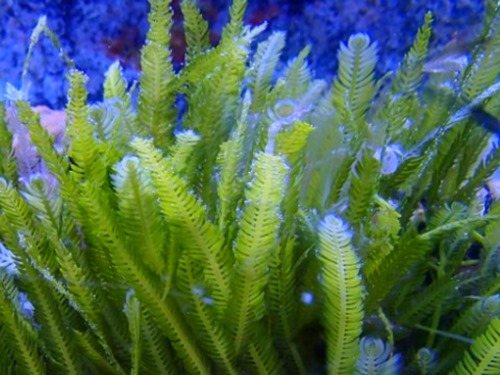
The caulerpa algae, like most other algae, are green in color. They have feather-like structures growing out of its stems which makes the algae look like the bryopsis algae. Once they’re into the aquarium they spread really fast as they can reproduce both sexually and asexually (by sending out runners).
Grape caulerpa is a type of caulerpa with the algae taking the shape of a grape being its primary distinction from other caulerpa algae.
Algae Prevention And Control
If you want to maintain a healthy environment for your marine life to thrive in then you must ensure the proper regulation of algae in your saltwater aquarium.
It’s important to let the macro (good) algae grow and limit the growth of the micro (bad) algae. Doing this will ensure a safe and ideal environment for your fish and plants to live in and also make your aquarium look clean and healthy.
Let’s take a good, hard look at how we can get rid of this menacing organism.
Maintaining Clean Water
Regular maintenance of saltwater for your fish is very important as most of the algae growth arises out of the non-maintenance of the saltwater. You must ensure that the saltwater is clean and filtered before it enters the tank. For this to happen you should buy a good quality filter and regularly clean the filter so that there aren’t any blockages or dirt in the filter.
Maintaining clean water will ensure that the level of phosphates and nitrates in the water are in check. It will also ensure that the pH levels in your water tank remain at the right level.
Regular Tank Maintenance
Regular tank maintenance is definitely one of the most important ways of maintaining a clean environment in your saltwater aquarium.
Cleaning your tank once a week to remove any algae formation, cleaning up the equipment including tank walls and filters, keeping the pH levels in check, and making sure there isn’t any buildup of phosphates and nitrates in the aquarium helps keep the aquarium clean and free from toxic substances.
Proper Lighting Period (Photoperiod)
The lighting period or photoperiod as it is known as should be maintained between 8 and 10 hours a day in order to ensure that not only do the plants, macroalgae, and fish get the lighting they require but also limit the lighting so as to restrict the microalgae from growing and polluting the aquarium.
Having more lighting than the prescribed period will mean that unwanted algae will have the required resources to grow and spread. Thus, you’ve to make sure you maintain the correct balance by only having lighting for 8 to 10 hours a day.
Use The Right Sea Salt Mix
Using the right sea salt mix can go a long way in preventing algae from creeping into your tank. Don’t buy cheap sea salt mixes in order to save a few bucks as this will mean that the sea salt mixes won’t do their job as they should and you’ll end up having to spend more money fixing things up that a good sea salt mix would have done for you otherwise.
Sea salt mixes will help you maintain the ideal ecosystem for your aquarium. Good sea salt mixes will have appropriate amounts of calcium, alkalinity, and pH levels which will aid in the maintenance of the perfect equilibrium in your tank. They are completely free from nitrates and phosphates, which are major causes of the growth of algae in aquariums.
Slightly more expensive sea salt mixes offer high quantities of calcium and alkalinity which further help improve the environment of the aquarium and prevent the growth of algae. While you’d want to be liberal with the quality and quantity of the sea salt mixes, going overboard can lead to algae formation due to the excess nutrient buildup. So make sure you’re smart with the amount you put in.
Refugiums
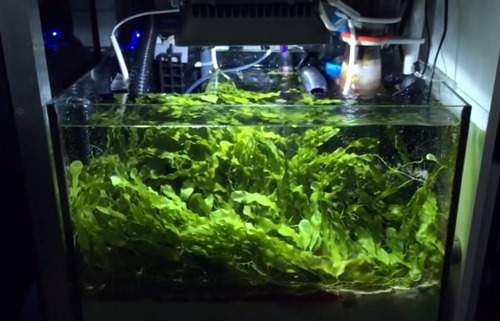
Refugiums are great to enhance the quality of life in your saltwater aquarium. They do a great job in maintaining ideal levels of oxygen, pH levels, cleansing the water, and reducing nitrate levels to a large extent.
They primarily work by placing plants in the filter that do the job of absorbing nitrates and thereby starving the algae present in the aquarium. Through this a lot of unnecessary chemicals are removed that can cause algae to grow but are not required for the marine life in your aquarium.
Refugiums are absolutely fantastic, natural way of maintaining the right balance in the aquarium. Besides being a great and natural way of keeping the aquarium clean from unwanted chemicals, they’re also a great food for some of the marine life in your aquarium, thus playing more than one important role in keeping your aquarium clean and healthy.
Protein Skimmers
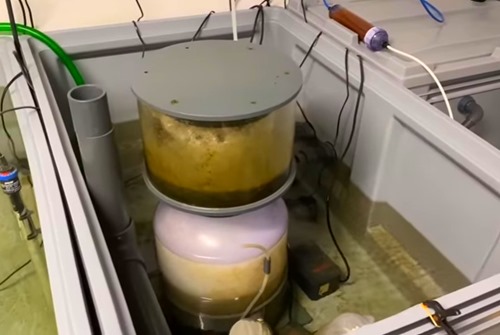
Easily one of the most important filtration equipment for saltwater aquariums, experienced hobbyists can swear by the protein skimmer. It plays a very vital role in the aquarium by keeping unwanted substances out. Although many amateur hobbyists find it an “unnecessary” expense, they will eventually learn how important a role it plays in keeping the water clean in the system.
What makes the protein skimmer so important and different from other components of the filtration system is that the protein skimmer continuously filters unwanted organic waste that accumulates over time from various sources in the aquarium.
It does a great job in limiting the excess vitamins and minerals which aid the growth of algae in the aquarium through its filtration process. The protein skimmer filters this out on a regular basis, keeping the water clean and the aquarium free from algae creeping into it.
Keeping Live Rock In The Aquarium
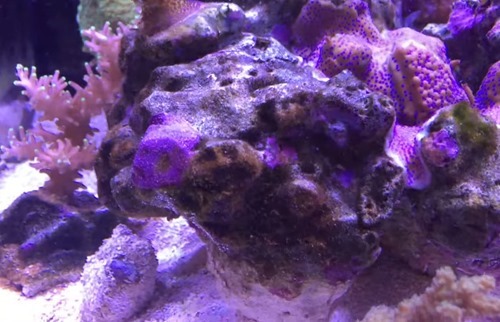
Live rock when kept inside the aquarium can look great and blend really well with the looks of the aquarium.
You probably would have seen a bunch of these rocks in aquariums and wondered how perfectly well they fit into the whole aquarium setup. Have you ever considered the fact that they’re not only aesthetically good but also serve the purpose of keeping certain elements that promote the growth of algae at bay.
These rocks do a great job at absorbing excess nitrates and phosphates built up through various sources in the aquarium by absorbing it and holding on to it like a sponge. Once the nitrates and phosphates enter the aquarium through one of the many sources, some of it can be left behind which can lead to the growth of algae in your tank.
By placing a cured live rock you’ll prevent nitrate and phosphate levels from going out of control and keep it under check. The rock, once dead, still keeps the nitrates and phosphates inside it, not letting it out and contaminating the whole aquarium.
Having The Right Substrate
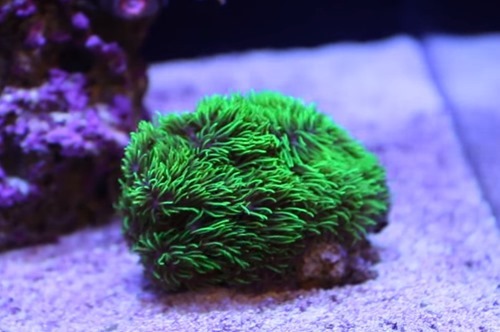
Just like some of the rocks you see in aquariums, substrate can also be mistaken to be used in aquariums only because they give the “look and feel” of an aquarium. Quite hard to imagine, but they play a bigger role than giving the aquarium the right look.
Substrate is the material that you find on the aquarium’s tank bed. It primarily consists of gravel and gravel-like substances that aid in the filtration of water, provide good bacteria required for the well-being of the aquatic life, increase calcium and pH levels.
Saltwater and freshwater have different substrates that are designed specifically for that particular environment, so make sure when you go out to buy your substrate you pick the right one.
Phosphate Removal Compounds
Phosphates can cause really big problems if their presence in the aquarium is not controlled properly. There are various phosphate and nitrate controllers in this list, but they only do that much to stem the problem.
In order to make sure that excess phosphates are completely removed from the aquarium you’ll need to introduce phosphate removal compounds to control them. The main problem with having excess phosphate is that not only is it one of the best nutrient sources for unwanted algae but they also inhibit calcification which prevents the growth of corals in the tank.
Using phosphate kits is a great way of keeping a check on the phosphate levels in the tank, but a major problem with that is that when phosphate is introduced into the aquarium it gets quickly absorbed by the algae and thus it doesn’t show up on the phosphate testing kits.
So if you ever face the problem of excessive algae growth in your tank, you can probably put your wager on it being the phosphate levels and use a good phosphate removal compound to get rid of the phosphates and thereby limit the growth of the algae. This will starve the algae, kill it, and get rid of it over a period of time.
Algae Eating Creatures

Algae eating creatures not only add to the biodiversity in the aquarium but they’re a great way of fighting algae in those little corners in your tank that somehow seem to have algae growing no matter what you do.
You’ll have to do some pretty solid background research before you go out and decide to buy some. One thing you’ll need to take into account is whether the creature is meant for freshwater or saltwater aquariums.
Besides this, you also have to see if they will fit into your current setup and are compatible with the current marine life in your saltwater tank. These inhabitants are great because they control the growth of algae and restrict it before it gets out of control and fills up your entire tank.
Routine Checks
Doing a routine check on the tank will sort out any problems with your equipment or other components of your aquarium before things get out of control and start causing major problems.
A thorough check every fortnight is recommended but if you don’t have the time make sure you do it at least once a month to ensure everything is running smoothly and without a hitch.
Good Quality Equipment
Buying good quality equipment can be expensive in the short-run but will save you a lot of money and time in the long-run. Good quality equipment means that your equipment won’t fail or need to be fixed on a regular basis. It also means that each of the equipment will do the required job perfectly well helping with the maintenance of a perfect ecosystem within your saltwater aquarium.
Algae breakout chances will also be drastically reduced with good equipment as the filters will do a good job of keeping the water clean of excessive nutrients and thereby keeping the algae at bay.
Carbon Dosing
Adding organic sources of carbon promotes the growth of good bacteria in the tank which over a period of time will grow and start consuming the nitrates and phosphates inside the tank. As this is happening the protein skimmer will come into action by removing the bacteria from the water and also the nitrates and phosphates with it.
In order for this setup to work, you need to make sure you have a protein skimmer that’s working perfectly well. If you don’t then the bacteria will eventually die and release the nitrates and phosphates back into the water.
There are various sources of carbon and it’s good to start out at low levels and slowly increase the dosage depending on the requirement. Keep a close check on the nitrate and phosphate levels in your tank before increasing the dosage.
Depending on the source of carbon you choose, it can affect other parameters of the water as well such as alkalinity/pH levels. Thus, you have to keep a regular check on these things when you’re dosing carbon into your tank.
Introduce Macroalgae

Macroalgae is the good algae we talked about earlier. When they share the same environment with microalgae, they both fight for the same nutrients which are required for their growth. By introducing macroalgae into the aquarium it will absorb the excessive organic buildup in the aquarium along with nitrates and phosphates which it requires for growth.
Besides taking up the excessive nutrients in the water, macroalgae is a great source of food for many fish in your saltwater tank.
Control Food Addition
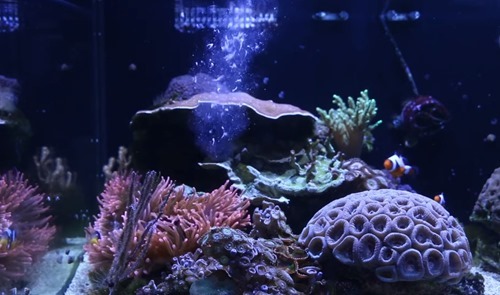
As much as you love the aquatic creatures in your tank and want to make sure they’re fed well, you also need to keep in mind that any excess food that isn’t consumed by them is going to lead to the formation of nitrates and phosphates which is basically inviting algae to come and setup up camp in your aquarium.
Add just the right amount of food that is required by the fish in your tank and don’t make the mistake of adding excessive food unless you’re in a mood to do some algae cleaning in the near future.
That’s an in-depth look into some of the best prevention and control practices to help you prevent and control algae growing in your saltwater aquarium.
If you can do this on a regular basis you’ll have a clean saltwater aquarium with no worries about algae growing and taking over your aquarium.
Conclusion
That’s a wrap on the ultimate guide to algae control for saltwater aquariums. In this guide, you’ve learned about
- why and how algae grows in your aquarium,
- what are the types of algae and
- what you can do to arrest the growth of them while still allowing the good algae to grow.
If you liked this article and would like to get more tips and handy information for that aquarium of yours at home, please subscribe to our newsletter.
We’re very keen to know what you’ve got to say about the article and what prevention and control methods have worked for you. Please let us and other readers like you know by leaving your valuable comments below.

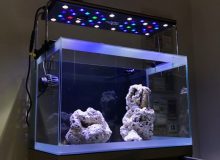

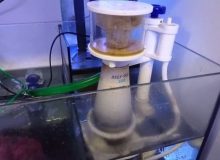
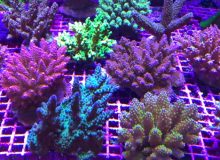
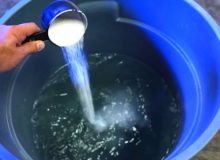
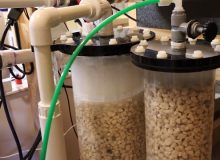
Leave a Reply